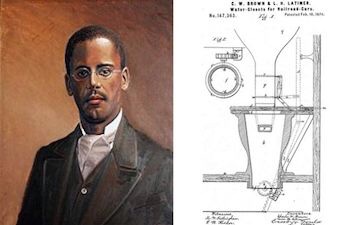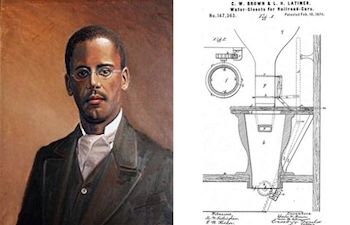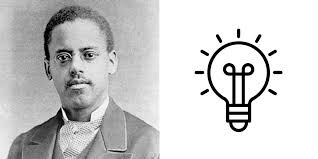Lewis Latimer (4 September 1848 – 11 December 1928) is regarded as one of the most significant African-American inventors due to the number of inventions he produced and patents he obtained, as well as the significance of his most well-known invention: a longer-lasting filament for the electric light.
He also assisted Alexander Graham Bell in obtaining the telephone’s patent. Later in his career, when electric light extended throughout the nation, Latimer’s skill was in high demand. Thomas Edison may not have acquired a patent for his light bulb without Latimer’s assistance and skill.
Nevertheless, partly as a result of historical revisionism, Latimer’s numerous enduring achievements are not well-known today.
Early Life

Lewis Latimer was born in Chelsea, Massachusetts on September 4, 1848. He was the youngest of four children born to paperhanger George Latimer and fugitive slave Rebecca Smith Latimer. His parents escaped Virginia in 1842 by hiding beneath the deck of a ship headed north, but his father was identified in Boston by a former employee of their enslaver. George Latimer was arrested and taken to trial, where he was defended by Frederick Douglass and William Lloyd Garrison, two prominent 19th-century African-American activists in North America. A group of activists eventually paid $400 for his freedom.
Shortly after the Dred Scott decision of 1857, in which the U.S. Supreme Court held that a slave could not appeal for his freedom, George Latimer vanished. Latimer possibly feared a return to slavery and fled underground. It was a difficult situation for the remainder of the Latimer family.
Early Career
Lewis Latimer strove to assist his mother and siblings financially. Latimer lied about his age in order to enlist in the U.S. Navy during the Civil War in 1864, when he was 15 years old.

Latimer was posted aboard the USS Massasoit and was discharged with honor on July 3, 1865. He returned to Boston and accepted a position as an office assistant at Crosby & Gould, a patent law firm.
Observing draftspeople at the company, Latimer taught himself mechanical drawing and drafting. The partners, recognizing his talent and potential, promoted him to drafter and subsequently to head drafter.
In November 1873, he married Mary Wilson at this time. Emma Jeanette and Rebecca Louise were the couple’s two daughters.
Inventions
After relocating to Bridgeport, Connecticut in 1880, Latimer was engaged as assistant manager and draftsman by Hiram Maxim’s U.S. Electric Lighting Co. Edison’s major competition was Maxim, who invented the electric light.
Edison’s light consisted of an almost airless glass bulb encasing a carbon wire filament, which was commonly composed of bamboo, paper, or thread. When energy was passed through the filament, it grew so hot that it lighted up.

Maxim sought to improve on Edison’s light bulb by addressing its primary flaw: its typically short lifespan of only a few days. Latimer set out to create a more durable light bulb. He devised a method to encapsulate the filament in a cardboard envelope that prevented the carbon from decomposing, so extending the life of the bulbs and making them cheaper and more efficient.
Latimer’s expertise was well-known, and he was sought after to continue improving both incandescent and arc lighting. Latimer was appointed to lead a number of planning teams as more big cities began wiring their roads for electric lighting. He assisted in the installation of the first power plants in Philadelphia, New York City, and Montreal.

In Canada, New England, and London, he managed the installation of illumination in railroad stations, government buildings, and key thoroughfares.
On December 11, 1928, Latimer passed away in the Flushing area of Queens, New York. His wife, Mary, had passed away four years prior.
Source: ThoughtCo.